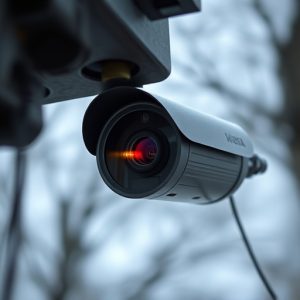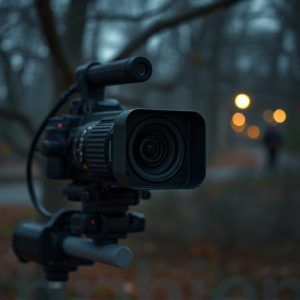Spy Camera Childcare Safety Guide: Detecting Electromagnetic Signals
The Spy Camera Childcare Safety Guide emphasizes the importance of detecting hidden surveillance dev…….
The Spy Camera Childcare Safety Guide emphasizes the importance of detecting hidden surveillance devices in childcare centers using electromagnetic signal detectors, alongside regular visual inspections. Caregivers are encouraged to stay updated on security protocols and technology advancements to safeguard children's privacy and safety. Ethical implementation of spy cameras in common areas, transparency, regular maintenance, secure storage, encryption, and a robust privacy policy are crucial for fostering a safe and nurturing environment while balancing technological vigilance with ethical considerations.
In today’s digital age, ensuring childcare safety and privacy is paramount. This comprehensive guide delves into the world of spy camera detection, offering valuable insights for early childhood environments. Understanding electromagnetic signals and their association with hidden surveillance devices is key to identifying potential threats. Armed with the right tips, caregivers can navigate this modern challenge effectively. Discover practical strategies to safeguard children and create a secure space where they can explore and grow without surveillance intrusions.
- Understanding Electromagnetic Signals and Spy Cameras
- Tips for Detecting Hidden Surveillance Devices in Childcare Settings
- Best Practices for Ensuring Safety and Privacy in Early Childhood Environments
Understanding Electromagnetic Signals and Spy Cameras
Electromagnetic signals are an integral part of our modern world, with various devices emitting them in different frequencies. Understanding these signals is crucial when it comes to detecting hidden surveillance devices, especially in sensitive areas like childcare centers. Spy cameras, often used for malicious purposes, operate by transmitting electromagnetic waves that can be captured and analyzed.
In the context of a Spy Camera Childcare Safety Guide, knowing what to look for becomes essential. These signals can be detected using specialized equipment designed to identify radio frequency (RF) emissions. By understanding the unique signatures of spy camera transmissions, parents, caregivers, and security personnel can stay vigilant, ensuring the safety and privacy of children in their care.
Tips for Detecting Hidden Surveillance Devices in Childcare Settings
Detecting hidden surveillance devices in childcare settings is a crucial aspect of ensuring children’s safety and privacy. As part of a comprehensive Spy Camera Childcare Safety Guide, it’s essential to be vigilant and proactive. Start by conducting regular visual inspections, paying close attention to dark corners, hidden crevices, and unusual objects that might serve as camera components. Look for any signs of tampering with walls, ceilings, or furniture, as these could indicate the presence of hidden cameras.
Additionally, invest in specialized electromagnetic signal detectors, which can pick up on the unique emissions from surveillance devices. These tools are invaluable for identifying invisible threats. Keep staff and parents informed about these measures through awareness campaigns, emphasizing the importance of reporting any suspicious findings immediately. Regularly updating security protocols and staying informed about the latest surveillance technology will further fortify childcare settings against potential intrusions.
Best Practices for Ensuring Safety and Privacy in Early Childhood Environments
In early childhood environments, ensuring safety and privacy is paramount. When implementing surveillance devices for childcare, it’s crucial to adhere to best practices that respect both children’s and staff members’ rights to privacy. A comprehensive Spy Camera Childcare Safety Guide should be followed to avoid potential ethical pitfalls. This includes careful placement of cameras, focusing on common areas like playrooms and kitchens, rather than bedrooms or private spaces. All personnel should be informed about the camera locations and the purpose of surveillance, fostering transparency.
Additionally, regular maintenance and secure storage of surveillance equipment are essential. Keeping devices up-to-date with the latest encryption standards ensures that electromagnetic signals from the cameras remain protected. A robust privacy policy should govern the use of recorded footage, dictating who has access and for what purposes. This proactive approach to childcare safety and privacy combines technological vigilance with ethical considerations, creating a secure and nurturing environment for young minds.
In conclusion, equipping oneself with knowledge about electromagnetic signal detection is an essential component of any comprehensive spy camera childcare safety guide. By understanding how hidden surveillance devices operate and implementing best practices for safety and privacy in early childhood environments, caregivers can create a secure and trustworthy space for children to learn and grow. Staying vigilant and proactive in navigating these modern challenges ensures the well-being and peace of mind of both children and their families.


